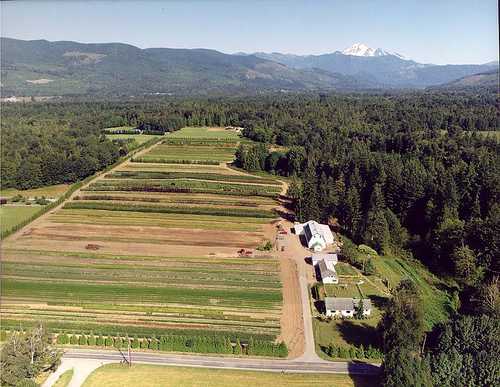Learning to use wood charcoal in farming at a Northwestern Washington native plant nursery.
Richard Haard, Fourth Corner Nurseries, Washington, Febuary 20, 2007
My motivation for preparing this post is to be able to use this motivate discussion of charcoal as a soil additive. Trying to do this work at a very busy nursery that is perhaps pushing their production factor too high (over 80%) is rather frustrating as experiments have gotten over ruled by planning changes, wiped out by harvest before I can read the data and the conditions set up for the experiment just do not work. However, I have been encouraged however and I am now using hardwood charcoal as a carrier for natural inocculum as a matter of routine.
Fourth Corner Nurseries is a wholesale supplier of native plant species, located on 77 acres in the coastal lowlands of northwestern Washington, USA. With approximately 40 acres under cultivation, we produce two/three million direct-seeded, field-grown, bare-root native plants annually. Our principal crop is individually seed-sourced, bare-root deciduous trees and shrubs, herbaceous perennials, grasses and emergent species such as sedges, cattails and rushes for environmental restoration purposes. Our mission is to sustainably grow plants while supporting workers and their families who depend on the farm for their economic subsistence. Use of surplus biomass from our willow coppice field and other materials is our alternative energy vision.
Aerial view of our farm

Aerial View of Fourth Corner Nurseries

